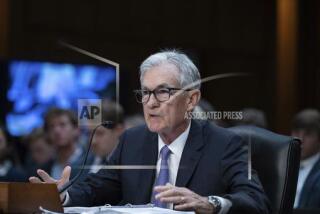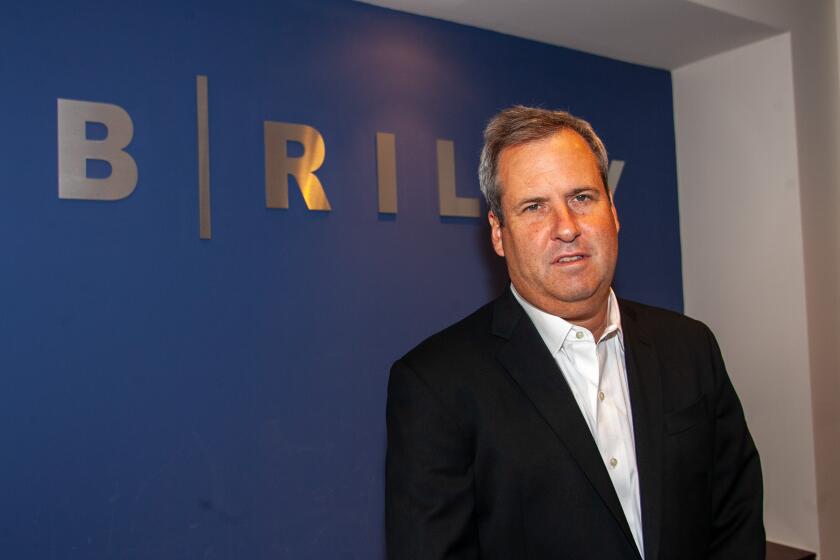Rising rates stir policy debate
As with so much else about the U.S. economic recovery, interest rates have become a story of glaring contradictions and uncertainties.
Mortgage rates have jumped in the last few months as Wall Street has become more convinced that the economy is improving and as fears of renewed inflation have bubbled up.
The average rate on a conventional 30-year mortgage topped 5% this week, up from a record low of 4.2% in November, loan giant Freddie Mac reported Thursday. Mortgage rates tend to follow interest rates on long-term U.S. Treasury bonds, which have surged to their highest levels since last spring.
Yet even as long-term rates rise, banks still are paying next to nothing on deposits, denying tens of millions of Americans, particularly seniors, a decent return on their cash. In fact, rates on money in short-term bank accounts have been edging down.
The average interest paid on one-year bank savings certificates nationwide slipped this week to a record low of 0.63%, according to Informa Research Services. That’s down from 0.83% six months ago, when the economy seemingly was in much worse shape, and from 1.04% a year ago.
While mortgage and savings rates have diverged, most analysts believe that all interest rates will eventually move higher, assuming the economy continues to improve. Though that would be expected in a recovery, the concern is how much the economy can stand.
Already, each tick higher in home loan rates threatens to undercut any rebound in the still-struggling housing market.
“We’re in an environment where, if anything, [interest rates] are likely to go up, not down,” said Kurt Brouwer, a partner at financial advisory firm Brouwer & Janachowski in Tiburon, Calif. “Rates are still ridiculously low.”
At the center of the interest rate equation, of course, is the Federal Reserve. The Fed, which controls the nation’s supply of money, directly sets short-term rates and can strongly influence longer-term rates as well.
Under Chairman Ben S. Bernanke, the Fed has pulled out all the stops to try to bolster the U.S. recovery. Despite growing signs of economic strength since September, the Fed has continued to hold its benchmark short-term rate near zero, where it has been for the last two years.
Many analysts believe the Fed won’t start lifting the benchmark rate before the end of 2011, at the earliest.
More controversial is the Fed’s attempt to suppress longer-term rates by buying massive amounts of Treasury bonds from investors, a program initially launched in 2009 and resumed in November with a new $600-billion commitment.
Among economists and even some Fed officials, there is an increasingly heated debate about whether Bernanke’s economic-stimulus campaign has gone too far. With both short-term and long-term interest rates, the risk is that Fed policy now is the equivalent of pushing down a coiled spring -- and that when finally let loose, rates could rebound dramatically.
Some of that pressure has begun to be released. Despite the Fed’s continuing purchases of Treasury bonds, market rates on Treasuries have surged since October. So have rates on municipal bonds.
Some Fed critics say the market’s reaction is a warning that investors believe the central bank will unleash inflation by pumping huge new sums into the financial system.
Many of the Treasury bonds the central bank is buying are being sold by banks. The Fed wants the banks to take the money they get from selling those securities and lend it out to drive consumer and business spending.
If that spending happened too quickly it could fuel inflation, although there’s no certainty that that scenario would unfold. But because inflation eats into the fixed-rate returns paid by bonds, even the mere prospect of greater inflation can cause investors to demand higher rates on new bonds.
When the Treasury sold $16 billion in new 30-year bonds Thursday, it paid a yield of 4.75%. By contrast, the government paid 3.85% when it sold 30-year bonds last October.
Bernanke has repeatedly cited the nation’s high unemployment rate, now 9%, as justification for the Fed’s unprecedented efforts to keep interest rates down. Job growth has been the missing link in the recovery.
“Until we see a sustained period of stronger job creation, we cannot consider the recovery to be truly established,” the Fed chief said in a speech last week.
But when he testified Wednesday before the House Budget Committee, Bernanke was grilled by Republicans on the risk of inflation accelerating, meaning beyond the 2% or so a year that the Fed believes is optimal. By the Fed’s favorite measure, inflation is at the lowest levels in decades.
Rep. Paul D. Ryan (R-Wis.) asked Bernanke whether the recent jump in Treasury bond yields might reflect investor nervousness about inflation.
The Fed chief said he was “not concerned” about rising rates because he believed they stemmed from investors’ perceptions of an improving economy.
Moreover, Bernanke has repeatedly vowed that the Fed will begin pulling money out of the financial system well before any significant inflation increase can occur. “We are committed to making sure that we do it at the right time,” he told Ryan.
Still, among some investors “there’s concern that [the Fed is] missing something on inflation,” said Maury Harris, chief economist at brokerage UBS in New York.
Inflation already has become an issue for manufacturers -- and their customers -- as prices for cotton, wheat, coffee and other commodities have soared since August. And some foreign governments say the Fed’s easy-money policy has encouraged speculators to borrow and dive into commodity markets. Bernanke has insisted that the Fed isn’t to blame for those price increases.
He also has made clear that he still thinks the biggest risk the economy faces is another slowdown, not inflationary growth. And that view may explain why he’s so quick to dismiss rising long-term interest rates.
The Fed also was confronted with a jump in long-term rates last spring. The 10-year Treasury note yield, a benchmark for mortgage rates, rose as high as 3.99% last April 5, well above the current level of 3.70%.
But the economy then slowed sharply in the second quarter, and all interest rates plummeted.
“We could be experiencing a head-fake similar to last year” on rates, said George Goncalves, a bond strategist at brokerage Nomura Securities in New York.
If the economic recovery stays on track, however, investors’ concern about the trend in long-term interest rates will only intensify.
With the federal government borrowing to finance an estimated $1.5-trillion deficit this year, the Fed’s Treasury bond purchases are taking the equivalent of all of the government’s new debt issuance. But that will last only through June, when the Fed says it expects to complete the $600-billion purchase program.
The question then isn’t whether private investors will step up to buy Treasury debt, but at what price?
More to Read
Inside the business of entertainment
The Wide Shot brings you news, analysis and insights on everything from streaming wars to production — and what it all means for the future.
You may occasionally receive promotional content from the Los Angeles Times.










